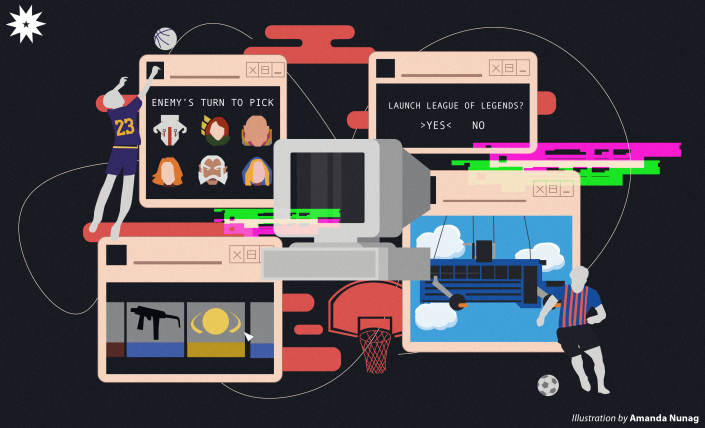It was in the early afternoon of October 5, 2013 when I was preparing to watch the League of Legends Season 3 World Championship Finals. As I settled into my chair, I was daydreaming about what the future of the industry had to offer. In hindsight, people wrongly assume that esports is just a product of good marketing; thus, they cannot be held in the same regard compared to their traditional sports counterparts—but the truth about this burgeoning industry is more complex.
Traditional sports have been around for the longest time. Sports leagues such as the National Basketball Association (NBA) or the English Premier League (EPL) have large fan bases around the globe, and that is not a surprise considering how basketball and football are widely regarded as the most popular sports. As a sportswriter myself, I am a fan of numerous teams across different sports. My friends and I always talk about the intricacies of the game; I find joy in talking about sports—no matter the topic, including esports.
The numbers game
Esports has recently taken mainstream media by storm. I follow numerous titles such as League of Legends, Dota 2, and to some extent, Counter-Strike: Global Offensive—and I am amused by how some of these games are also mentioned vis-à-vis traditional sports in terms of viewership. When people talk about sports, one expects millions of viewers tuning in to the game using their device of choice or thousands of people gathering in a stadium to watch the game live—but the same also goes for esports. Tournaments are held in big arenas, and viewership numbers can skyrocket to the hundreds of thousands.
The esports competitive scene does not stray far from how traditional sports do it. Professional leagues such as the NBA, MLB, and the prestigious FIFA World Cup have formats for their respective tournaments. The same can be said for esports—tournaments such as The International or the League of Legends World Championship also utilize formats just like these professional leagues do.
And on top of these viewership numbers, many professional esports athletes stream their respective playthroughs on online platforms such as Twitch.tv or YouTube to feed video game content or interact with their fan base. Without a doubt, those platforms are the catalysts of the exponential growth of the esports industry.

Looking for the fine line
People talk about athletes such as LeBron James, Lionel Messi, and Roger Federer regarding their style of play—or how great they are in their respective sports—but nowadays, professional esports athletes such as Tyler ‘Ninja’ Blevins, or Lee ‘Faker’ Sang-Hyeok are discussed with the same regard. Recently, Ninja even broke through the ESPN World Fame 100 2019, a list recognizing the 100 most famous athletes in the world. It is clear that esports athletes are capable of holding their own in terms of popularity and prominence.
Regarding their popularity, esports athletes might even be regarded as marketing machines. High-profile investors and companies are making an effort to get involved with the industry through many ways. Teams get sponsored, ranging from acquiring gaming gears to even having their own training facilities. If you told me 10 years ago that the industry would get this much attention, I would have probably just shrugged off the idea.
At this point, I sound like a broken record comparing both industries and pointing out their similarities. But time and again, esports has shown to be capable of standing beside traditional sports, and it is an industry that is developing fast. Throughout the years, the popularity of esports failed to waver. The more time passes by, the more excited I become for what the future holds for the industry.
